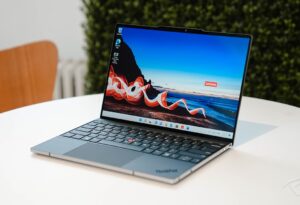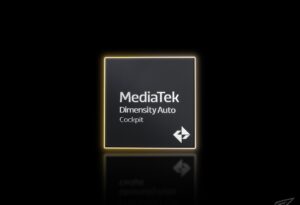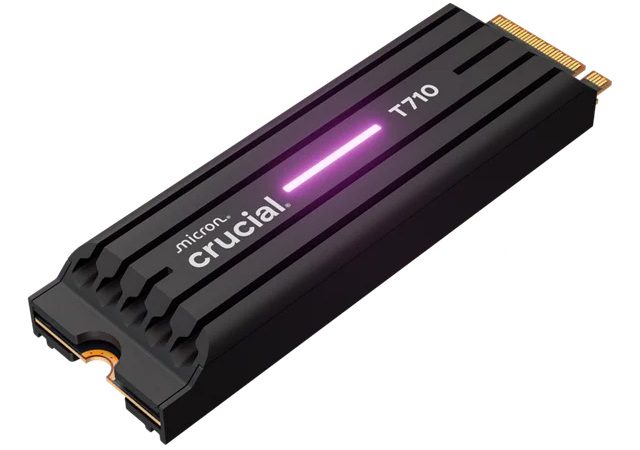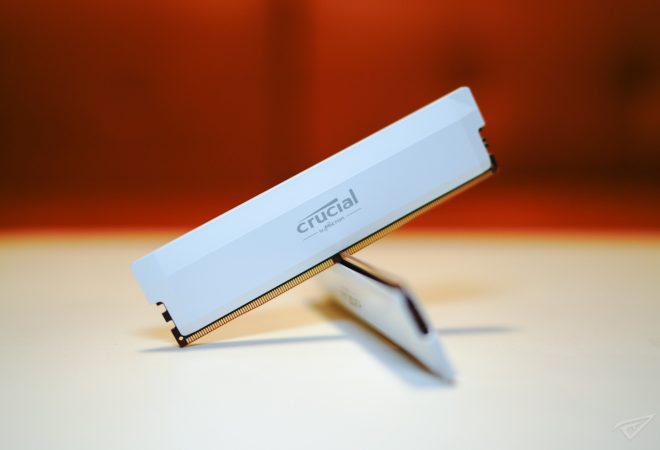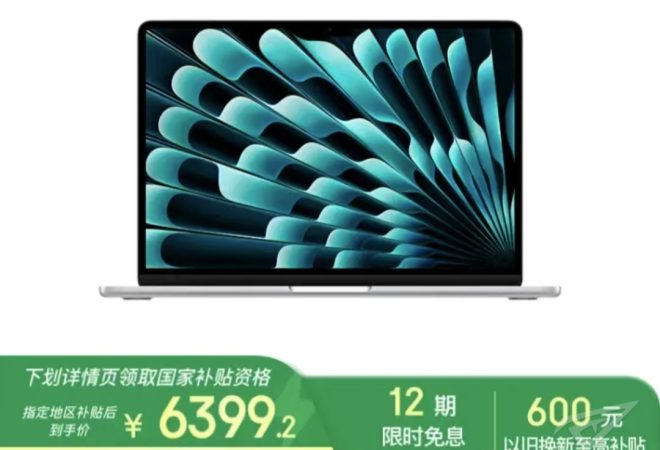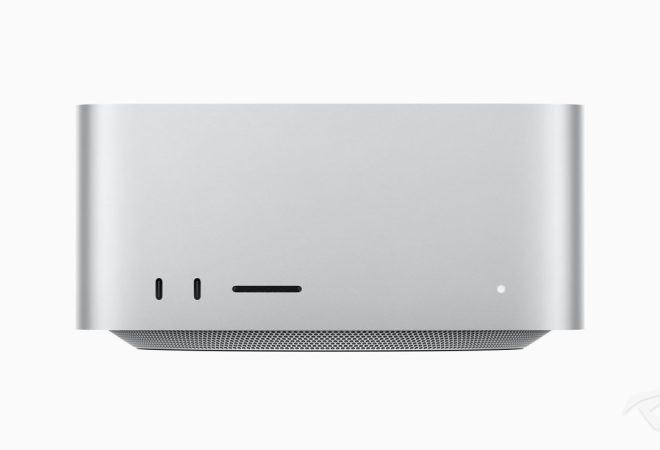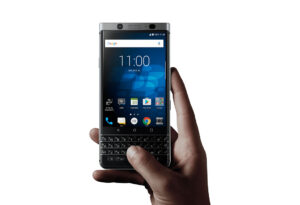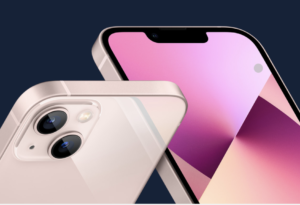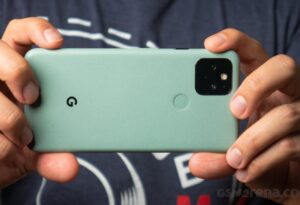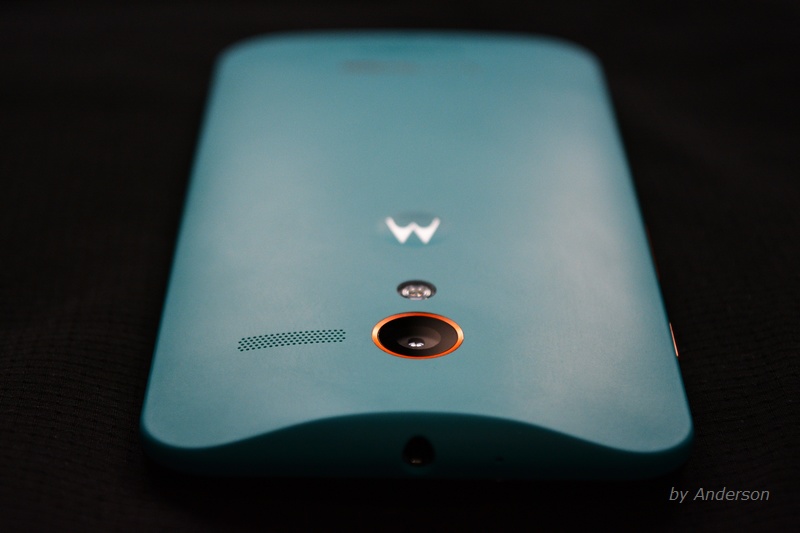
在正要推出Moto X下一代的时候,正是回顾一下上代Moto X的时候了,它是少数能够改变整个安卓环境的几款产品之一。
Moto X并不是摩托罗拉第一件的安卓产品。可以认为,凭着Verizon对它的Droid系列产品的帮助使这些产品在美国运营商市场取得了不错的占有率。摩托罗拉为运营商提供能和iPhone竞争的产品不单令摩托罗拉成为市场的焦点,而且还使安卓成为全球广受使用的平台。
安卓在欧洲已经很受接纳了,所以并不需要另一款产品来推动安卓在欧洲的发展,但是美国市场和世界其他地方都不同(正如塞班和Windows都已经消耗用了大量的金钱在美国的事例一样),所以,Droid产品在谷歌所在国美国中得到了非常巩固的成功。谷歌购买摩托罗拉手机部门保证了摩托罗拉的下一款手机会很受注目,尤其是因为谷歌已有的Nexus系列已经足够展示最新版本的安卓系统。
在谷歌宣布要购买摩托罗拉的两年之后,首款新产品才正式出现︰Moto X。最初只在美国市场销售,它的目标客户并不是开发者(他们交给Nexus吧!)而是消费者。配合了可选颜色的后背、人体工学的设计,以及谷歌对设计小组的资源支持,大家都对这款产品有很高的期望,而这些期望也算达到了。
我认为摩托罗拉最有趣的地方是没有完全在规格上全力以赴︰双核1.7GHz的Krait处理器、2GB RAM、16或32GB的ROM,但没有支援MicroSD记忆扩充︰作为一款谷歌产品,它需要将用户推到Google Drive和云端储存上。
也许最大的惊喜是屏幕了。解像度是1280*720,它的屏幕只得720P但是它的操作介面采用了很大的元件和触控范围,使手机变得易用。犠牲了资讯量来得到更高的易用性是聪明之举,使Moto X可以更针对普通的用户,而不是那些会追求极致屏幕表现的人。当然这个4.7”的AMOLED屏幕用起来很令人满意,它有亮丽和鲜明的色彩表现。
它的小屏幕也使手机变得更小。我已经讲过,它可以很好地贴合在你的手上,而小的屏幕令它可以走进「单手操作」的类别中。无论是HTC、Sony还是Samsung的主线产品都无法做到,他们几乎都是属「平版手机」一类的了。顶级手机配搭「中等」大小屏幕仍然是一件新奇的事,虽然最近Sony的Z1 Compact也跟上了。摩托罗拉花了很多心思来设计,造出了多个手掌的3D模型来找出最好的形状(真像谷歌的做法)。结果使它成了手感最好的手机之一。
最大的新「功能」是Moto Maker,它让客人可以选择手机的颜色和风格,更可以选择机背的物料。它不会改变手机的本身,但这样的个性化使手机更贴近每个客人。
毫不出奇地,Moto X是使用了原生的安卓界面,即使它并不是最新的版本(很可能是因为摩托罗拉小组和谷歌安卓小组之间的防火墙,它是用来保障对所有厂商公平的)。伴随着少量的图标、颜色、空间的变化,Moto X还有两个新的硬体「核心」来处理感知性的资讯和语音。
后者容许你在说出「OK Google Now」时手机会立即离开待机状况,准备接收指令。这些指令可以通过语音来发出,配合了手机的硬件及谷歌的云端处理,令这款手机可以实现无接触的操作。这是和Google Now紧密地绑定着的(可以推测Android Wear也将会有相似的做法放在智能手表上),但老实说,它更像是新奇的小玩意多于实用工具,但科技早晚会使它变得实用的。我相信谷歌会采集大量的用户资讯来提高它的准确性,但如果我转用其他安卓手机后我是不会怀念这个功能的。
而前者就容许更多的通知出现在这个低能耗的AMOLED屏幕上,令你不只拥有一个解锁键,更能拥有所有接收到的电邮、短讯、即时聊天,以及其他的资讯都一并出现在这个通知系统中。在你一眼看过去时,它能比其他安卓手机提供更多资讯。利用好这个上锁屏幕可以使手机更好用,更令Moto X这款手机变得出众。我也喜欢这些资讯只在有需要见到的时候才出现,这是通过加速度计、位置测量器以及光敏感应器一起做到的。
如果这些只是对消费市场的作用,那么Moto X已经在北美市场得到鼓励了。它得到了评论家们的赞赏也得到了公众的认受。即使它需要一些时间来到达其他国家,它也是摩托罗拉一款优秀的产品。但是,这款手机的活跃性更为谷歌对安卓的控制变得更为巩固。
首先是,Moto X是三星Galaxy系列产品的一个明显挑战者。配合低价的Moto G出现来与Galaxy低档手机的竞争,谷歌和摩托罗拉学习了三星用一个名字来将整个系列产品推广的手法。我认为Moto X没有非常高的销量是因为它更多被用作一个杠杆而非只是被用作一个钝器。
Moto X令三星发现谷歌可以轻松地造出一款能吸引大众消费者的产品。配合谷歌的资源在后面支持,Moto X可以轻易地向Galaxy S4发出挑战,而且在需要时随时可以推出一款摩托罗拉的平版电脑。三星在CES发布了它的Note Pro和Tab Pro,将它们的安卓界面改得非常不像原来的安卓设计,例如它们身上就有不少预载的程序来取代谷歌更推荐的程序。三星几乎想将Galaxy系列的用家赶出谷歌的系统。
正是这时摩托罗拉出现。谷歌需要运用它的影响力,而Moto X在全球的出现可以帮助谷歌做到这一点。三星终于减少了对系统的大幅改动,在Galaxy S5身上虽然仍采用了TouchWiz界面,但已经更贴近谷歌口味的产品而不是三星的。
不要忘记谷歌收购摩托罗拉是有赚的。在谷歌完成对三星的这场柔道后,他们就将摩托罗拉卖给了联想,作价少于30亿美元。谷歌用了125亿美元来收购摩托罗拉,看起来他们是将这个部门丢弃只要了它的专利。再加上摩托罗拉的现金和出售摩托罗拉的一些副业(例如机顶盒部门和摩托罗拉的工厂),使谷歌最终只用了10亿美元(还有20亿美元左右的营运损失)来得到他们估计值50亿美元的一批专利。
在你认为联想只是买到了一间普通的安卓生产商之时,这里还有一个好处,就是摩托罗拉已经准备好要进攻像中国这样的低成本高产量的市场。
也许它没有成为最佳销量的产品,Moto X是过去一年来最重要的安卓产品之一。它提供了优异的用户体验、它保障了谷歌的安卓在市场中的地位、它也提醒了三星他们并不是谷歌的手机世界中能够支配一切的合作方。在未来的一年内,我将会非常细心地看着联想会如何带领摩托罗拉走下去,但Moto X已经在安卓的世界奠定了它的地位︰它是一款非常值得注意的手机产品,它更是在安卓内部的政治角力中作出了贡献。
英文原文:
Looking Back On The Moto X:The Android Handset That Changed The Smartphone World
With the upcoming release of their next-generation handset, now is the time to look back on the signature Moto X smartphone…one of the few Android handsets that genuinely changed the landscape.
The Moto X was not Motorola’s first Android handset. Arguably with a large marketing spend from Verizon their Droid handset established Google’s operating system in the US carrier market. Providing the carriers with a competitive handset to rival the iPhone not only gave Motorola mind-share in North America, it also established Android as a valid option around the world.
Given its strong adoption in Europe, Android was not in desperate need of another hit, but the American market is a different beast to the rest of the world (as both Symbian and Windows Phone have found out to their cost), so the Droid delivered a solid base hit in Google’s domestic market. Google’s purchase of the Motorola Mobility division ensured that interest in the next handset was going to be high. Not least because of Google’s existing Nexus range of handsets, which are still used to show off the latest version of Android.
Two years after Google announced the intent to buy Motorola Mobility, the first new handset became available…the Moto X. Initially available in the US markets, it placed for focus not on developers (a remit which remains with the Nexus) but on consumers. With a customisable back plate, an ergonomic curved style, and the resources of Google to back up the design team, expectations were high, and they were pretty much met.
What I found interesting is that Motorola didn’t go all out in the specifications –the dual-core Krait CPU ran at 1.7 GHz, it had 2 GB memory, and either 16 GB or 32 GB of on-board storage. But no support for MicroSD cards for extra storage –being a Google product the intention was to push users towards Google Drive and cloud storage.
Perhaps the biggest surprise was the screen. With a resolution of 1280×720 pixels, the handset is a 720p HD resolution but the UI focussed on larger elements and large touch targets making the handset easier to use. Sacrificing the volume of information that could be shown on screen for clarity was a smart design move, pitching the Moto X at the general consumer, rather than those focussed on the ultimate pixel level. Certainly the AMOLED 4.7〃 screen is a pleasure to use, with bright and bold colours.
The smaller screen also allows for a compact design. I’ve already noted it fits in the hand nicely, but the smaller screen brings the handset into the ‘one-handed’territory…something the main lines from HTC, Sony, and Samsung have all avoided with their near-phablet screens. A flagship phone in the ‘mid-range’size is still a novelty, although the recent Z1 Compact from Sony has followed that lead. Motorola spent a lot of time on the design, creating 3D samples of various hands to find the best shape possible (how very Google). The result is one of the nicest feeling phones in your hand.
The biggest new ‘feature’on the Moto X was the Moto Maker, allowing customers to choose the colour and style of their handset, with a choice of materials for the back plate. That doesn’t change the basic nature of the phone, but the personalisation brings the phone closer to each consumer.
Not surprisingly, the Moto X launched with the stock Android UI, although it wasn’t a cutting edge version (likely due to an internal firewall between the Motorola team and the Android team to reassure other manufacturers). Along with some changes to the icons, color shading, and spacing, the Moto X shipped with two new hardware ‘cores’, to process contextual information and to process natural language.
The latter allows you to say ‘OK Google Now’into thin air and have your handset come out of stand-by and wait for instructions. These can be spoken in natural language and a mix of the on-board hardware and Google’s cloud processing will allow touch-less control of the handset. This is tied in heavily with Google Now (and presumably Android Wear will have a similar system for their smartwatch) and frankly feels a bit of a novelty, rather than something practical. It’s still a long way away from KITT in Knight Rider, but technology is slowly getting there. I’m sure Google will be grabbing lots of usage data to improve the accuracy, but this is not a feature I’m going to miss on other Android devices.
The former allows for more alerts to be placed onto the lock screen of the low-power AMOLED screen, giving you not just an unlock icon, but information about incoming emails, texts, messages, and other details on your handset that are part of the notification system. It gives you more information on a quick glance than many other Android devices. Making best use of the lock screen adds functionality to the device, and also helps it stand out. I also liked that these notifications are only surfaced when they need to be through the monitoring of the accelerometer, positioning, and light sensor.
If those were the only contributions to the consumer market, then the Moto X would have earned its spurs for North America. It was critically acclaimed and accepted by the public. While it took some time to reach foreign shores, it’s been a solid handset for Motorola.
But the activities around the handset contributed much more to Google’s control of the Android ecosystem.
The first is that the Moto X was a clear challenger to Samsung’s Galaxy range of handsets. With the release of the lower priced Moto G challenging the low-end Android handsets carrying the Galaxy branding, Google and Motorola took the same play as Samsung by relying on a name to sell handsets across a whole portfolio. That the Moto X did not sell in huge volumes I think is more down to using the Moto X as leverage rather than a blunt instrument.
The Moto X put Samsung on notice that Google could quite happily build a mass market smartphone that would appeal to the masses. With the resources of Mountain View behind it, the X could easily challenge the then flagship Galaxy S4 around the world, and a Moto tablet could easily arrive if required. Samsung’s unveiling of the Note Pro and Tab Pro at CES, which radically altered their Android UI into something far from Google’s vision, on top of the use of bespoke applications instead of Google’s preferred options was enough. The South Korean company was close to siloing the Samsung Galaxy user from the Google ecosystem.
Which is here the Motorola deal came in. Google had to exert their influence, and the threat of a subsidised Moto X across the world did the job. Samsung backed away from the radical changes, and the Galaxy S5, while still using TouchWiz, is clearly a Google flavoured version of Android, rather than ‘a Samsung phone’.
Let’s also not forget that the Motorola deal was a profitable one for Google. After the ju-jitsu move against Samsung, they turned round and sold the hardware division to Lenovo for less than $3 billion. Given the initial cost of $12.5 billion it looked like a dumping of the division, but retaining the patent portfolio. Add in Motorola Mobility’s cash reserves and the money made selling off ancillary parts of the business (such as the set-top box division and the Motorola owned factories), the overall balance left Google with a bundle of patents they valued at $5 billion, for a cost of $1 billion (and around $2 billion of operating losses).
That’s another win right there, before you consider that the sale to Lenovo brought another hardware partner on board to the Android ecosystem –a hardware partner ready to attack the low cost high volume markets such as China.
While it might not have been a best seller, the Motorola X is one of the key Android handsets in the last twelve months . It delivered a solid consumer experience, it reinforced Google’s vision of Android in the marketplace, and it reminded partners such as Samsung that they were not the dominant partner in Google’s smartphone world. I’m watching carefully to see where Lenovo take the brand over the next twelve months, but the Moto X has earned its place both in the notable devices but also the notable politics of the Android world.
本文作者Ewan Spence,原文刊载于福布斯的网站,张贴时间为2014年5月4日,原文链结:http://www.forbes.com/sites/ewanspence/2014/05/04/looking-back-on-the-moto-x-the-android-handset-that-changed-the-smartphone-world/。
著作的版权属于福布斯或其指定相关人仕,此中文翻译版只是用于交流和讨论,译者Anderson老张,转载请保留著者和译者资讯,谢谢!
 爱黑武
爱黑武

